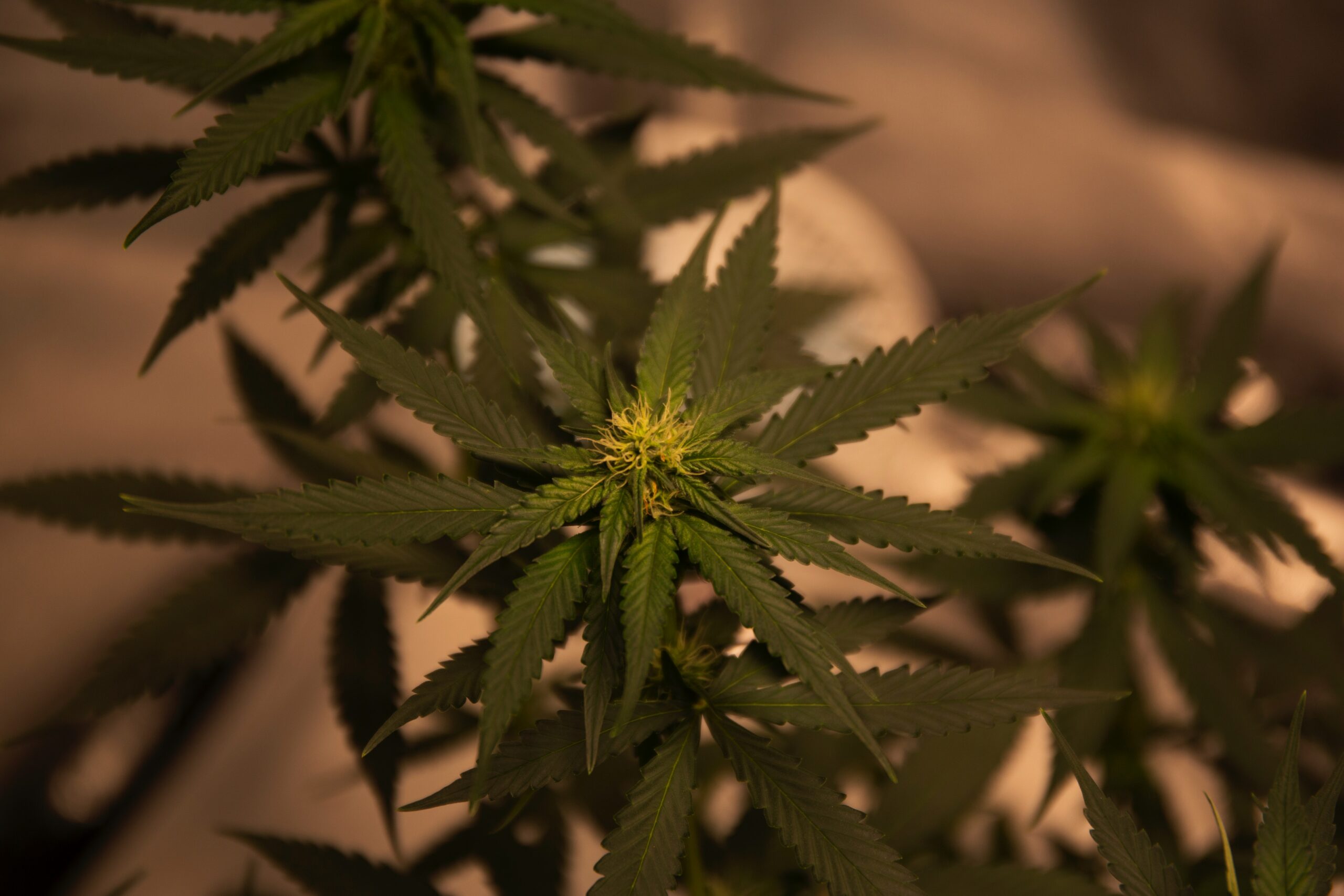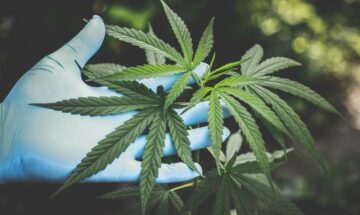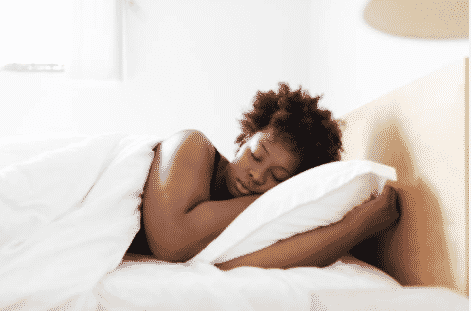
- The CBD:THC ratio is the amount of CBD per part of a drug. If a consumer is looking for a ratio of CBD higher than 1:1, other options include 20:1(1), 20 parts of CBD for every part of THC.
- Research shows the possibility of positive effects of high CBD to THC ratio on pain treatment in palliative care for patients(2).
- Formulations with CBD and THC may result in a slight reduction in symptoms linked to anxiety while no significant impact on symptoms linked to depression(3).
- Cannabis research showed that CBD may help neutralize the psychoactive side effects of THC(4).
What Is a 20:1 CBD:THC Ratio?
The 20:1 CBD:THC ratio is the amount of CBD per part of THC. The ratio simply describes that there are 20 parts of CBD for every part of THC(5).
Other cannabinoids, such as CBD, may protect against specific adverse psychological effects from THC. CBD may also be capable of antagonizing some of the adverse effects of THC(6). Thus, the indicated ratios show levels of each cannabinoid used compared to the amounts of THC present in a product.
Studies on the symbiotic relationship between cannabinoids suggest that CBD may counter the psychoactive properties of THC(7). Furthermore, terpenes have also shown positive effects when combined with CBD and THC(8).
The Benefits of Using a 20:1 CBD:THC Ratio
Cannabis research showed that CBD may neutralize THC’s psychoactive and intoxicating effects(9). A high CBD to THC ratio may help counteract the side effects of THC, especially for continued use(10).
Also, 10 states in the U.S. have relaxed regulations toward marijuana-based products with high CBD and low THC ratios(11).
The levels of THC have long been an issue with medical cannabis use, which resulted in prohibition in countries like the U.S.
20:1 CBD:THC Ratio vs. 1:1 CBD:THC Ratio: Which One Is Better?
Studies show that above a ratio of 1:1 CBD:THC may be associated with reduced effectiveness. Researchers also suggest that CBD:THC ratio may have considerable variance in perceived effectiveness on neuropathic pain, insomnia, and depressive symptoms(12).
Furthermore, CBD-only formulations show better results in treating conditions such as anxiety, seizures linked to epilepsy, and Dravet or Lennox-Gestaut syndromes in children(13).
However, despite therapeutic claims and testimonies from various individuals, the use of THC and CBD products should be under medical supervision. Cannabis research is still new, and many published studies show either limited or inconclusive results.
What Is a CBD:THC Ratio?
Cannabidiol (CBD) and tetrahydrocannabinol (THC) ratio is the amount of each cannabinoid in a product relative to each other(14).
The ratio is the quantity of one substance to another expressed as the quotient. Many cannabis products use different ratios of CBD and THC, determining the user experience.
Cannabidiol and tetrahydrocannabinol are cannabinoids that have piqued the interest of researchers to pursue studies on Cannabis sativa, Cannabis indica, and Cannabis ruderalis.
Cannabis sativa is a flowering plant from the Cannabaceae family native to eastern Asia and used for both medicine and industrial fiber.
Cannabis indica is also a plant in the Cannabaceae family, commonly known as marijuana due to its high amounts of delta-9 tetrahydrocannabinol.
Cannabis ruderalis is under the same Cannabaceae family, which may have originated in southern Russia. It contains very low THC, so it is rarely grown.
The interest in cannabinoids is due to the historical and cultural impact of marijuana and the observed effects CBD and THC have on the body.
CBD is a nonpsychoactive cannabinoid often at the forefront of cannabis research. On the other hand, THC is a psychoactive compound that gets users “high”(15).
Furthermore, only one CBD drug (Epidiolex) and three synthetic THC drugs (Syndros, Marinol, and Cesamet) have the approval of the Food and Drug Administration (FDA)(16). However, organic THC remains a Schedule I substance(17) and is highly restricted in countries like the U.S.
Understanding CBD:THC ratios and how it interacts with the body is necessary. The rationale is rooted in the entourage effect, a suggestion put forward by experts that cannabinoids interact and complement each other in providing health benefits(18).
Much interest has been seen in cannabinoids because of the body’s endocannabinoid system (ESC), which is a vast array of transmitters and receptors that uses endocannabinoids as means of communication(19).
Understanding the ratio of CBD to THC is vital because research on this subject suggests that both cannabinoids, when taken together, may offer better therapeutic benefits(20).
How to Figure Out the Correct Ratio of CBD to THC
THC levels concern many medical practitioners as a body’s reaction to this cannabinoid varies from person to person.
However, ingesting high levels of THC may result in a high psychoactive experience like euphoria and side effects such as dysphoria and hallucinations(21).
The correct ratio of CBD to THC depends entirely on the user, and the prescription a doctor, clinician, or specialist gives.
What Are the Most Common Ratios?
There are ratios for various cannabis products that may affect the overall experience and determine the wellness response of a user.
Cannabinoids are substances extracted from the Cannabis sativa plant or commonly referred to as medical cannabis or medical marijuana. CBD and THC are examples of cannabinoids.
Also extracted from the cannabis plant are terpenes, a substance that gives aroma to the cannabis plant(22). Some cannabis product producers add terpenes to the ratio because of the potential benefits.
The following are common ratios for cannabis-based or related products and their recommended ratios for various conditions.
CBD:THC Ratio for Pain
Neuropathic pain is one of the conditions scientists hope to find treatments for through cannabis research. A 2018 review from Current Pain and Headache Reports showed that cannabis may effectively treat pain(23).
Studies on THC and CBD effects on pain management are not conclusive. However, research shows that an increase in the ratio of both substances has doubled the perception of the substances’ effectiveness in patients needing pain relief(24).
Research suggests high CBD and THC doses for symptoms that are THC responsive, avoiding toxicity(25). High-CBD ratios are 20:1, 10:1, and 4:1, wherein CBD has more for every part of THC.
CBD:THC Ratio for Anxiety
The formulation of CBD:THC ratio for anxiety is generally inconclusive. However, studies on the effects of THC and CBD showed a slight reduction in symptoms linked to anxiety. However, the studies did not find any impact in treating symptoms linked to depression(26).
CBD:THC Ratio for Insomnia
Research into cannabis treatments for insomnia showed that CBD and THC may treat sleep disorders. However, extended use of THC may disrupt the quality of sleep and may decrease sleep latency(27).
CBD may help treat REM sleep behavior disorder and excessive daytime sleepiness. Drugs such as Nabilone may help improve sleep among chronic pain patients and reduce nightmares associated with post-traumatic stress disorder (PTSD) symptoms(28).
Studies into cannabis and its effect on sleep disorders are still new, and results are also inconclusive. Experts advise more clinical studies on cannabis and its clinical implications.
Other Common THC:CBD Ratios
Currently, the United States highly regulates cannabis products in the market, especially those without FDA approval, due to the potential high amounts of THC.
Here are some of the common ratios of cannabis products that are available in medical dispensaries.
CBD:THC at a Ratio of 1:2
THC dominant doses may result in psychoactive side effects. However, few studies suggest that CBD may counteract some of the adverse effects of THC, though the results are still not consistent(29). Though CBD may counter the side effects, the use of such a ratio is heavily restricted.
CBD:THC Ratio of 1:1
Research from Frontiers in Cellular Neuroscience mentioned that CBD and THC in a 1:1 ratio may help multiple sclerosis (MS) patients improve muscle spasms, pain relief, spasticity, and bladder control(30).
MS is a condition that affects the brain and spinal cord.
CBD:THC Ratio of Between 2:1 and 4:1
Dosages for 2:1 and 4:1 ratios are dosages where CBD and THC are almost equal. The somewhat CBD-dominant dose offers neutralization effects for THC side effects.
CBD:THC Ratio of More Than 10:1
High CBD dosages are among the prescribed medication allowed in most U.S. States. CBD-only formulations may neutralize the effects of THC(31).
FAQs
-
- What is the best ratio for CBD and THC?
CBD is one of the hundreds of cannabinoids extracted from the cannabis plant. There are no best ratios for CBD and THC.
However, Sativex, a cannabis-based drug containing CBD and THC in a 1:1 ratio, has been approved to manage neuropathic pain in patients with multiple sclerosis(32).
-
- What is a 1/20 tincture?
Tinctures are medicinal substances mixed with alcohol(33). One method of administering cannabinoids is through THC and CBD tinctures.
Tinctures are different from oils. CBD can be administered by mixing them in carriers such as coconut oil. Tinctures were one of the means of ingesting cannabis extract by people.
People swallow tinctures by placing drops of them under the tongue, also known as the sublingual method(34). A 1/20 tincture is a low THC/High CBD dosage mixed with an alcohol solvent.
-
- What is the CBD:THC ratio for anxiety?
Researchers are still studying brain reactions to CBD and the psychological effects of cannabinoids on a person.
There are currently no prescribed CBD:THC ratios for anxiety. However, there are ongoing promising trials on using high CBD ratio products.
- Healing With CBD, page 218.
https://drive.google.com/file/d/1AGlxnhS2SoFeOXEuysv75bd_C9pEnwsU/view - Benefit of Tetrahydrocannabinol versus Cannabidiol for Common Palliative Care Symptoms
https://www.ncbi.nlm.nih.gov/pmc/articles/PMC6776252/ - Cannabinoids for the treatment of mental disorders and symptoms of mental disorders: A systematic review and meta-analysis
https://www.ncbi.nlm.nih.gov/pmc/articles/PMC6949116/ - Does Cannabidiol Protect Against Adverse Psychological Effects of THC?
https://www.ncbi.nlm.nih.gov/pmc/articles/PMC3797438 - Healing With CBD, page 218.
https://drive.google.com/file/d/1AGlxnhS2SoFeOXEuysv75bd_C9pEnwsU/view - Cannabis, cannabinoids, and health
https://www.ncbi.nlm.nih.gov/pmc/articles/PMC5741114/ - The Entourage Effect
https://caclinics.com.au/australia-medicinal-cannabis-news/the-entourage-effect/ - Ibid.
- Does Cannabidiol Protect Against Adverse Psychological Effects of THC?
https://www.ncbi.nlm.nih.gov/pmc/articles/PMC3797438 - Ibid.
- State Medical Cannabis Laws
https://www.ncsl.org/research/health/state-medical-marijuana-laws.aspx - Benefit of Tetrahydrocannabinol versus Cannabidiol for Common Palliative Care Symptoms
https://www.ncbi.nlm.nih.gov/pmc/articles/PMC6776252/ - Approved indication: epilepsy (Lennox-Gastaut syndrome, Dravet syndrome) Epidyolex (Emerge Health) oral solution containing 100 mg/mL
https://www.nps.org.au/australian-prescriber/articles/cannabidiol-for-epilepsy-lennox-gastaut-syndrome-dravet-syndrome - Healing With CBD, page 218.
https://drive.google.com/file/d/1AGlxnhS2SoFeOXEuysv75bd_C9pEnwsU/view - FDA Regulation of Cannabis and Cannabis-Derived Products, Including Cannabidiol (CBD)
https://www.fda.gov/news-events/public-health-focus/fda-regulation-cannabis-and-cannabis-derived-products-including-cannabidiol-cbd - Ibid.
- FDA Approved Cannabis-derived or Synthetic Cannabis-related Products
https://www.samhsa.gov/sites/default/files/dfwp-fda-synthetic-approved-cannabis-02012022.pdf - CBD: A Patient’s Guide to Medicinal Cannabis, page 78.
https://drive.google.com/file/d/1MILU_6ZjYkII-XMUPHLFPiPQbrz__5Sh/view - The endocannabinoid system: Essential and mysterious –
https://www.health.harvard.edu/blog/the-endocannabinoid-system-essential-and-mysterious-202108112569 - The effects of Delta-tetrahydrocannabinol and cannabidiol alone and in combination on damage, inflammation and in vitro motility disturbances in rat colitis
https://pubmed.ncbi.nlm.nih.gov/20590574/ - Tetrahydrocannabinol (THC)
https://www.ncbi.nlm.nih.gov/books/NBK563174/ - The “Entourage Effect”: Terpenes Coupled with Cannabinoids for the Treatment of Mood Disorders and Anxiety Disorders
https://www.ncbi.nlm.nih.gov/pmc/articles/PMC7324885/ - Medical Cannabis for Neuropathic Pain
https://pubmed.ncbi.nlm.nih.gov/29388063/ - Benefit of Tetrahydrocannabinol versus Cannabidiol for Common Palliative Care Symptoms
https://www.ncbi.nlm.nih.gov/pmc/articles/PMC6776252/ - Ibid.
- Cannabinoids for the treatment of mental disorders and symptoms of mental disorders: A systematic review and meta-analysis
https://www.ncbi.nlm.nih.gov/pmc/articles/PMC6949116/ - Cannabis, Cannabinoids, and Sleep: a Review of the Literature
https://pubmed.ncbi.nlm.nih.gov/28349316 - Ibid.
- Does Cannabidiol Protect Against Adverse Psychological Effects of THC?
https://www.ncbi.nlm.nih.gov/pmc/articles/PMC3797438 - Perspectives on Cannabis-Based Therapy of Multiple Sclerosis: A Mini-Review
https://www.frontiersin.org/articles/10.3389/fncel.2020.00034/full#B71 - Does Cannabidiol Protect Against Adverse Psychological Effects of THC?
https://www.ncbi.nlm.nih.gov/pmc/articles/PMC3797438 - Sativex for the management of multiple sclerosis symptoms
https://pubmed.ncbi.nlm.nih.gov/16317825/ - Definition of tincture
https://www.merriam-webster.com/dictionary/tincture - Marijuana as Medicine? The Science Beyond the Controversy.
https://www.ncbi.nlm.nih.gov/books/NBK224395/



















